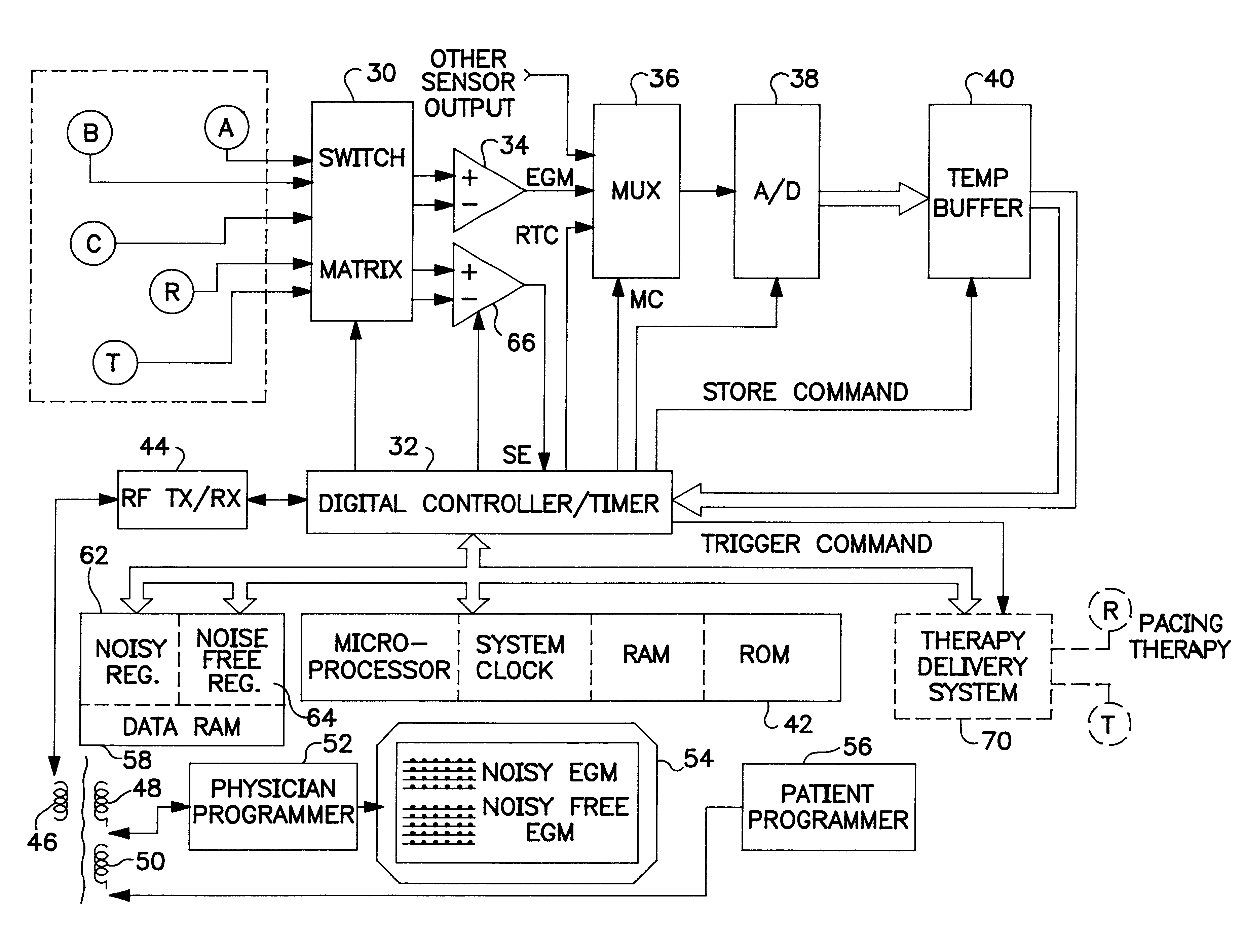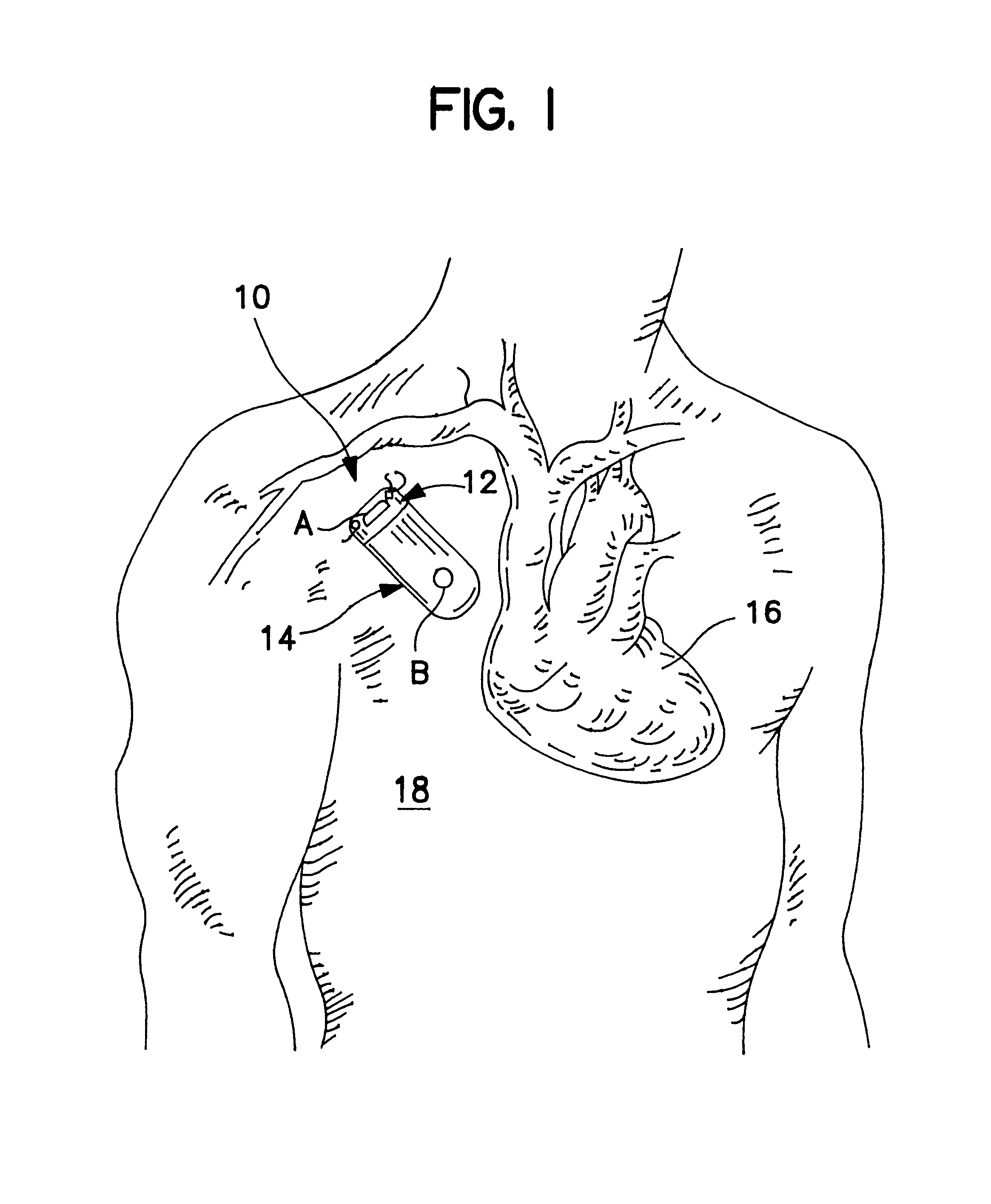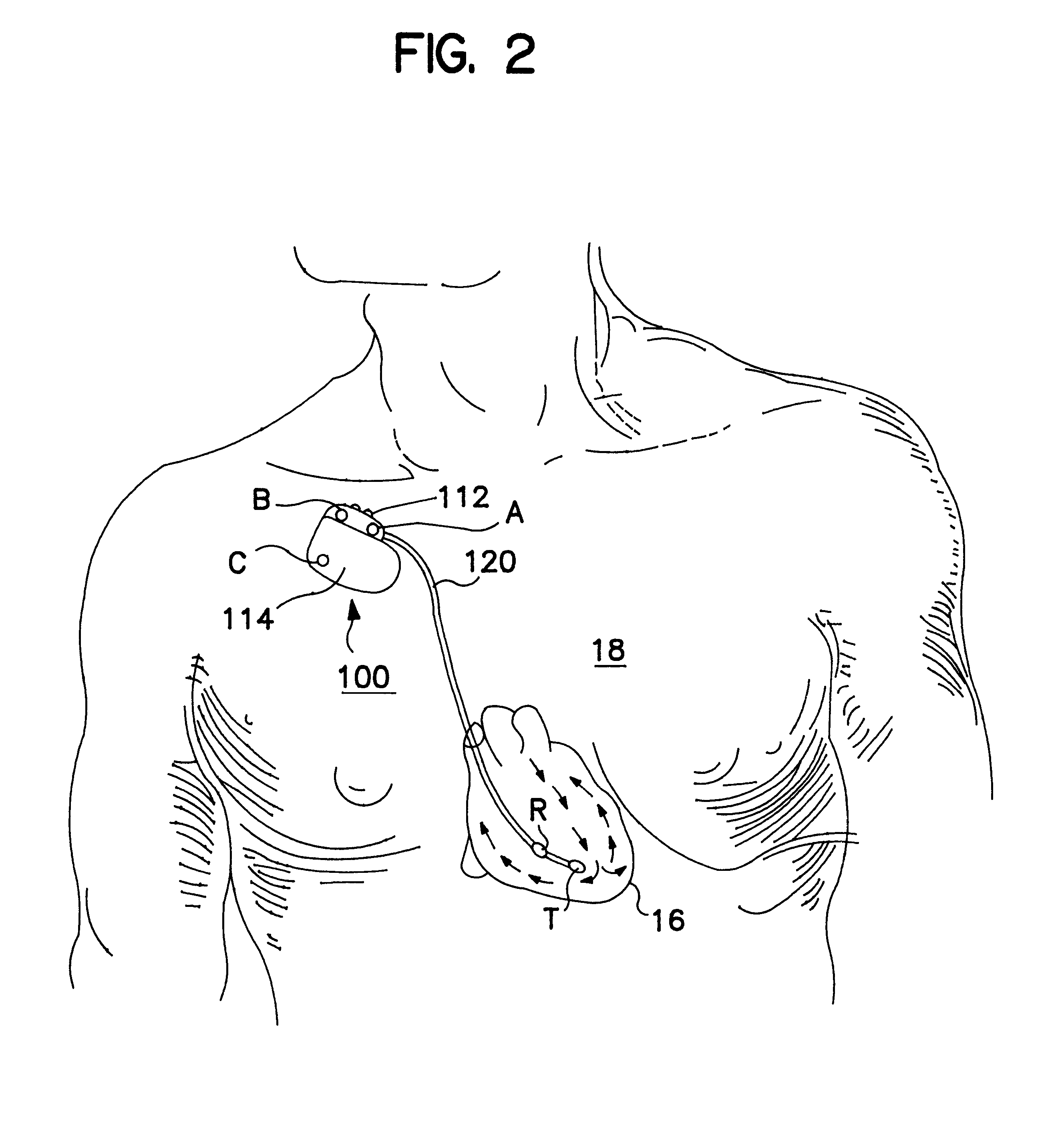Implantable monitor
a monitor and monitor technology, applied in the field of implantable monitors, can solve the problems of power consumption, externally worn ecg recorders have inherent limitations in the memory capacity of storing sampled ecg and egm data, and the inability to induce and observe palpitation symptoms by the physician
- Summary
- Abstract
- Description
- Claims
- Application Information
AI Technical Summary
Problems solved by technology
Method used
Image
Examples
Embodiment Construction
The noise discrimination and data storage methods and apparatus of the present invention find particular utility in cardiac EGM monitors that have EGM sense electrodes locate where electromyographic noise can contaminate the EGM signal and corrupt it. Consequently, they will be described in conjunction with such monitors or therapy delivery IMDs as illustrated in FIGS. 1 and 2. However, it will be understood that the present invention is not so limited and that the noise discrimination and data storage methods and apparatus of the present invention can be used in other cardiac or other electrical signal monitors implanted in the body or coupled externally to the body.
FIG. 1 is a simplified schematic view of an implantable cardiac monitor 10 embodying the improvements of the present invention implanted subcutaneously in the upper thoracic region of the patient's body 18 and displaced from the patient's heart 16. The housing of the cardiac monitor 10 takes the shape of the MEDTRONIC.R...
PUM
 Login to View More
Login to View More Abstract
Description
Claims
Application Information
 Login to View More
Login to View More - R&D
- Intellectual Property
- Life Sciences
- Materials
- Tech Scout
- Unparalleled Data Quality
- Higher Quality Content
- 60% Fewer Hallucinations
Browse by: Latest US Patents, China's latest patents, Technical Efficacy Thesaurus, Application Domain, Technology Topic, Popular Technical Reports.
© 2025 PatSnap. All rights reserved.Legal|Privacy policy|Modern Slavery Act Transparency Statement|Sitemap|About US| Contact US: help@patsnap.com



